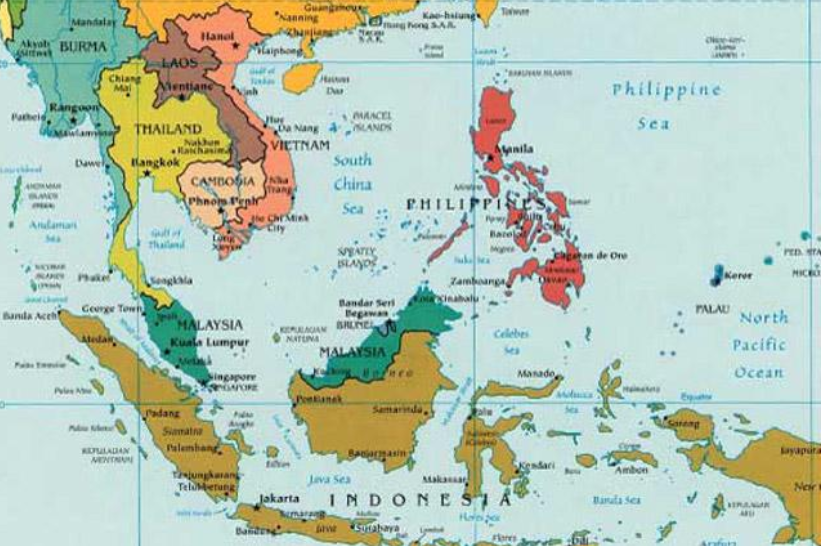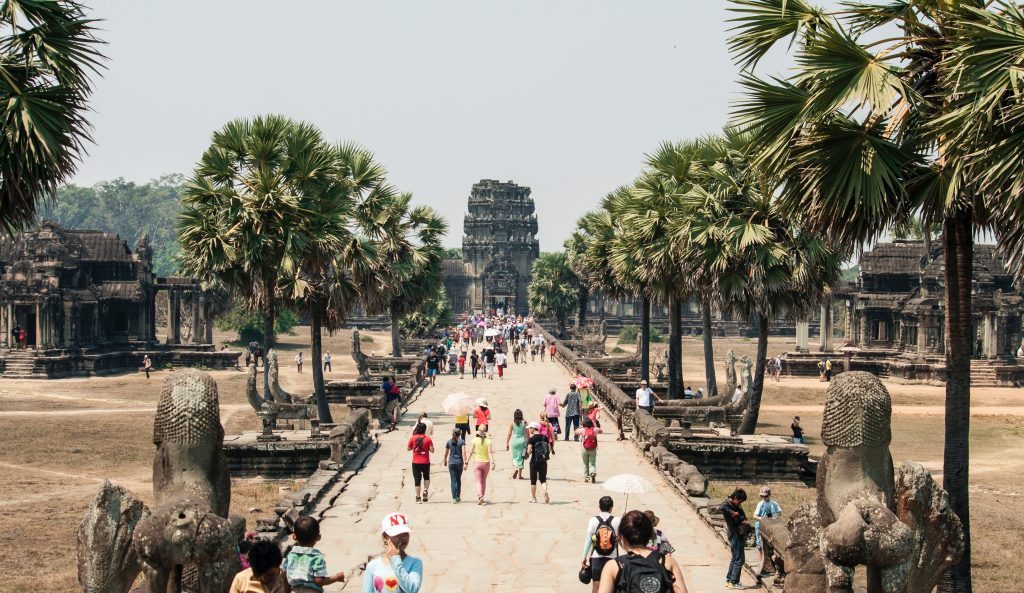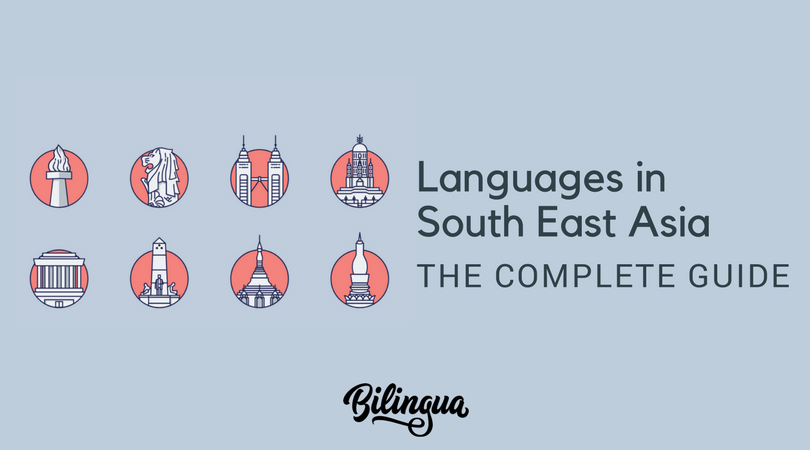Southeast Asia amasses a vast geographical area. It is a part of the Asian continent that boasts of a rich history, made up of distinct cultures, climates, cuisines, and systems of belief. This area’s linguistic diversity is no less impressive. Southeast Asia incorporates many countries from Myanmar to Timor-Leste. Being so diverse in so many respects, but especially with regard to its languages, one cannot point to a “monolithic” Southeast Asia, as some might believe exist. On the contrary, languages in Southeast Asia are a good source of study for the diversity of the region, revealing the historical influences and the localization of said influences that make this region particularly interesting.
The main languages in Southeast Asia are Lao, Thai, Burmese, Khmer, Vietnamese, Tagalog, Malay, Indonesian and also a peppering of Chinese dialects. Every one of these languages derives from distinct sources and possess unique cultural characteristics.

THAI
For example, Thai, spoken in Thailand, is an undeniably unique language. Like most languages in Southeast Asia, Thai has its origin and development within the confines of Thailand; however, approximately half of words in the Thai language are borrowed from other languages. Many places and their languages adopt new words as a result of cultural encroachment, be that due to a pervasive international influence, cross-border interaction, or for many other reasons. This is no less true of Thailand. Although it was never a colony of Western powers, the Thai language has adopted many words from several European languages, including Spanish, German, etc. However, it is especially from older languages such as Puli and Sanskrit that the Thai language received its deepest influences.
Also, like many Southeast Asian languages, Thai has five main ways of speaking depending on the context of who you are addressing. For example, there formal Thai, religious Thai, informal Thai, rhetorical Thai, and royal Thai, all of which are uniquely spoken to fit the given situation. All goes to show you that Southeast Asia remains a society that is deeply conscious of levels of formality based on different contexts of relations among people!
INDONESIAN
This unique aspect of some languages in Southeast Asia is also apparent in the Indonesian language. Different grammar particles are used when speaking Indonesian in a formal situation versus speaking it in an informal situation. Also, the particularities of particle usage are often regional, cannot be referenced in dictionaries, and can greatly modify or change the meaning of a sentence. Some people say that Indonesian is actually one of the easiest Southeast Asian languages to learn, and this is both true and untrue.
 The indonesian language is relatively easy to pick up as pronouns are gender-neutral and there are so many loan words from English. But to learn to speak Indonesian fluently enough to make your sentences carry the right subtlety of intonation is another thing!
The indonesian language is relatively easy to pick up as pronouns are gender-neutral and there are so many loan words from English. But to learn to speak Indonesian fluently enough to make your sentences carry the right subtlety of intonation is another thing!
BAHASA MELAYU
Bahasa Melayu is spoken in Malaysia, Singapore, parts of Brunei and Myanmar. Like Indonesian, Malay is an Austronesian language. But although the two languages are greatly similar, there are significant differences in vocabulary and pronunciation. Malay has been greatly expanded through the presence in it of Arabic, Sanskrit, Portuguese, Dutch and Chinese influence.
 As with most languages in Southeast Asia, there are countless offshoots of the official language in regional dialects and creoles. Malay is extremely diversified as a language.
As with most languages in Southeast Asia, there are countless offshoots of the official language in regional dialects and creoles. Malay is extremely diversified as a language.
TAGALOG
Tagalog is spoken in the Philippines. Did you know that before the Spanish colonized the area, there was no national language! It was only in 1937 that Tagalog became the national language of the Philippines (a decision that is not without its trace of regional power struggles). The case example of the Philippines (much like what happened in Indonesia) shows how formative Southeast Asia’s colonial history was. In a complicated manner, the history of colonization in Southeast Asia plays a crucial role in the formation of national identify for formerly disparate regions with its own cultures and dialects. Like other languages in Southeast Asia, Tagalog also contains a colorful history and spoken Tagalog reveals quite a bit of Malay, Chinese and Spanish influences.
BURMESE
The Burmese language is the official language of Myanmar. Did you know that with approximately 40 million people who speak Burmese, Burmese is actually a more widely spoken language than some minor European languages like Swedish?
Burmese script uses a Brahmic script; yet, the language has no connection to Indo-Tibetan languages such as Sanskrit.
Best of all, say goodbye to patrilineal culture within the Burmese language. There are no last names! Instead of a name revealing family lineage, names that rhyme are often preferred in Burmese. Oftentimes, names are also just common identifiers from the language, such as Little Boy or Lugal Nghe. Southeast Asian languages can really throw us off our received notions of identity!
VIETNAMESE
Beyond grammatical structures, and morphology based on historical developments, intonation and tone also distinguish several Southeast Asian languages from other languages. For example, the national language of Vietnam, Vietnamese, possesses six different tones that, depending on how they are used, can greatly change the meaning of a sentence. For example, the word “bo”, depending on the inflection used, can have several diverse meanings, ranging from “walk” to “butter.” Some of these tones include the dot tone, high and flat tone, up tone, low tone, question tone, and squiggle tone. All of these tones vary greatly in the pitch of the voice and create different meanings based on the inflection.
Also, did you know that written Vietnamese is partly made up of Latin characters? These Latin characters are equipped with modifications, with a purpose to highlight the tones that are so important to the language. Modifications have been made to these Latin characters to include accent mark, and subsequently to represent the varying inflections.
LAOTIAN
Laotian is spoken in Laos. It belongs to the same language family that also includes Thai, Shan and other languages spoken across Laos, Thailand, Burma, Southern China and Northern Vietnam. The languages share a common grammar and tone structure. The Vientiane variety of Lao is the official form of Lao. It is the variety used in the media and it is said that to speak Lao with a Vientiane accent is a mark of social privilege.
 Spoken language is not the only way that Southeast Asian languages showcase their respective inimitability, the written forms of these languages also convey the diverse makeup and origins of these languages. Some languages have written scripts pointing to the evolution of much older linguistic influences. The Laotian writing system evolved from Sanskrit. The Khmers spread the script during the time of the Angkor Empire and it was later adapted by Laotian and Thai people into their own individual written script (although still betraying the earlier influence).
Spoken language is not the only way that Southeast Asian languages showcase their respective inimitability, the written forms of these languages also convey the diverse makeup and origins of these languages. Some languages have written scripts pointing to the evolution of much older linguistic influences. The Laotian writing system evolved from Sanskrit. The Khmers spread the script during the time of the Angkor Empire and it was later adapted by Laotian and Thai people into their own individual written script (although still betraying the earlier influence).
KHMER
Khmer is spoken in Cambodia. As with Thai, the Khmer language sees a lot of Sanskrit and Pali influences mainly through the spread of Buddhism to Southeast Asia. Despite a lot of seeming similarities to Thai, Lao and Vietnamese though, Khmer is different in that it is not a tonal language. Many inscriptions in Khmer found on monuments are dated back to a time as early as the 7th century. This attests to the fact that despite its notorious difficulty, Khmer as a language saw widespread use and has been incredibly resilient in surviving through a pretty long history.

TETUM
Along with Portuguese, Tetum is the official language of Timor-Leste (a region formerly known as “East Timor,” a part of the island of Timor, bordered by Indonesia to the West). Tetum is however NOT a term Tetum-speakers use to refer to their own language! It is a name linguists and anthropologists give to the language of Austronesian-roots spoken in the Timor region. As with Burmese, Tetum once again sees a departure from patrilineal culture in important ways. A system of matrilineal descent prevails in Tetum. A child belongs not to its father but to its mother’s descent group (uma) from birth!
A sobering fact: Before 1970, Tetum speakers probably numbered more than two hundred thousand, but as a result of the Indonesian occupation, it is not currently possible to provide a reliable estimate of the number of Tetum speakers today. Tetum might wind up being one of the less resilient languages in Southeast Asia.
This brief overview should be enough to allow to see that Southeast Asia is really not a monolithic region and that its varieties of languages are far from simple. Instead, languages in Southeast Asia reveal myriad historical influences and showcase a culture that though different from country to country, seems to contain the same distinctive ability to spurn something unique and irreplaceable out of a long and complicated history of diverse influences.
Want more articles on languages from Southeast Asia? Check these out:
Best Mobile Apps to Learn Vietnamese for Beginners
Greetings in Thai – How to Say Hello and Goodbye
How to Say Hello in 100 Languages



